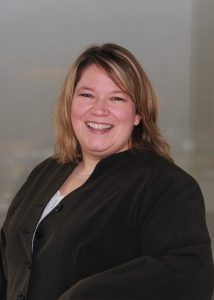Taking Your Original Content from Zero to “Wow!”
An interview with Susie Brown, marketing coordinator at Clayton & McKervey, P.C.
Susie Brown has been with Clayton & McKervey, P.C., for over 17 years, with the past 7 years focused on marketing. She joined Sarah Dobek from Inovautus Consulting on a panel about best practices in content creation during the AAM Conference in 2015. Susie’s insights on generating original content, splitting the workload and creating thought leaders inspired us to interview her to get more insights on how her firm began and continues to create its own original content. Susie shared her firm’s success stories in our interview below.
IC: Let’s begin by addressing the assumption that you have to be a large firm with a marketing staff of dozens in order to create your own, original content. How big is Clayton & McKervey, P.C., and how many of you are on the firm’s marketing team?
SB: We have 10 partners and about 65 total people in 2 offices. And our marketing team is just me and the director of marketing, Jennifer McQueen.
IC: That’s a good size, but not huge—definitely a size of firm and team that many of our readers can relate to. What type of marketing or specialization was your firm doing before you started creating your own content?
SB: We are a very focused firm—we work only with privately held companies that have a global reach. I guess you would say our niche is “international business.” Our clients are either expanding abroad or are foreign companies setting up operations in the U.S. We have geographic teams that focus on Mexico, Asia, and Europe.
IC: What inspired the firm to begin creating its own original content related to international business?
SB: Up until about 3 years ago, we had purchased all of our content. However, we found that it wasn’t really internationally-focused; it was more industry-driven. We couldn’t find a whole lot of content available for companies doing business internationally. At that point, our managing partner, Kevin McKervey, made the decision that we needed to build own content in order to make our people stand out in this area of business.
IC: That was very forward-thinking of him. Was it a gradual transition into creating your own content?
SB: Actually, no! We went cold turkey—we stopped buying third-party content completely and started our own.
IC: Wow! How did you get started?
SB: Since we were starting from zero, we knew we would need to start slowly. We began by finding one or two champions who really wanted to do this. As we wrote our first articles, we found that our professionals needed more structure to help them develop ideas and to get them out of a dry spell during busy season. About 3 years ago, we created our first editorial group, made up of one representative from each of our main services groups, tax, and assurance, as well as subject matter
experts in specific areas. We created an annual plan that included how frequently each group would publish and started assigning topics.
IC: What a great idea to create a structure and team to drive the process. Do you still use this same process?
SB: Yes, this group still meets and determines our content calendar. We meet 3 times per year, planning one trimester ahead during each meeting. At the beginning of each meeting, we confirm what the writers will be doing over the next 4 months. Then, we plan for the next 4 months to follow. Then we reach out to the writers to develop the content.
IC: You mention the writers—are they writing professionals or are they assurance and tax professionals?
SB: All of our writers are service delivery professionals. We don’t currently engage any outside writers or have trained writers on staff.
IC: Impressive! With the demands on time for assurance and tax professionals, how do you get the content you need, especially during busy season?
SB: We design it so that everyone plays a role! We’ve built content creation into the firm’s culture by linking it to performance plans and asking for a reasonable number of articles per person. Each person is only expected to contribute 1 to 2 articles per year. By getting everyone involved, we are able to create over 60 pieces of content per year—about one article per week.
IC: When you say “everyone,” do you mean staff and managers as well as principals and partners?
SB: Yes, in fact, we leverage content creation like we do our assurance and tax services. We’ve created 3 different roles in our leverage model: writers (staff under a manager); reviewers (senior accountants and managers); and authors (principals and shareholders). Everyone from each level gets some sort of byline or credit when the articles are published.
IC: What a nice way to give experience and exposure to younger staff! Where do you publish your content?
SB: Mostly on our website, LinkedIn, Facebook, Google+ and our blog. When a piece of content is created, we send alerts to staff ask them to send the articles to clients, which adds a personal touch.
IC: What is marketing’s role in content creation?
SB: We work with the editorial group to drive the process. We coordinate and lead meetings, and we make sure we’re confirmed with each of the writers, reviewers, and authors. This coordination is a manual process—ideally, we would find a way to automate it. We also format the articles for screen and printing.
IC: Has this process ever failed you?
SB: Very rarely an article might not make it all the way through the process. But this has only happened a handful of times in the 3 years we’ve used this process.
IC: Do you have any “lessons learned” for people who want to try this at their firms?
SB: We know that January through April is busy, so nothing is written during that time. We plan so that everything for that trimester is written and reviewed by Dec. 31. Also, we have critical buy-in from leadership. Our managing partner drives our culture of creating original content. Having it built into performance measures was helpful as well.
IC: Any final thoughts to share with our readers?
 SB: Try to develop a measure for ROI. It can be tough to measure, but you can look at areas like web analytics and email marketing analytics for measures. As we see pieces perform
SB: Try to develop a measure for ROI. It can be tough to measure, but you can look at areas like web analytics and email marketing analytics for measures. As we see pieces perform
ing better than others, we try to replicate the style and tone of our most successful articles. Also, optimize for SEO. We ask our writers to use words that they think clients and prospects would search for, and then make sure those words are included. This not only gives us better SEO, but it has the added effect of making our professionals more client-centric. And finally, it takes a village; content creation can’t be an effort by one person!
We want to thank Susie for sharing this experience from her firm. Hopefully, you will be inspired to dive into content creation at your own firms. For more information about how Clayton & McKervey, P.C., comes up with ideas for content, contact Susie at sbrown@claytonmckervey.com.
You can also follow Inovautus on social media for more ideas for creating and boosting your content.